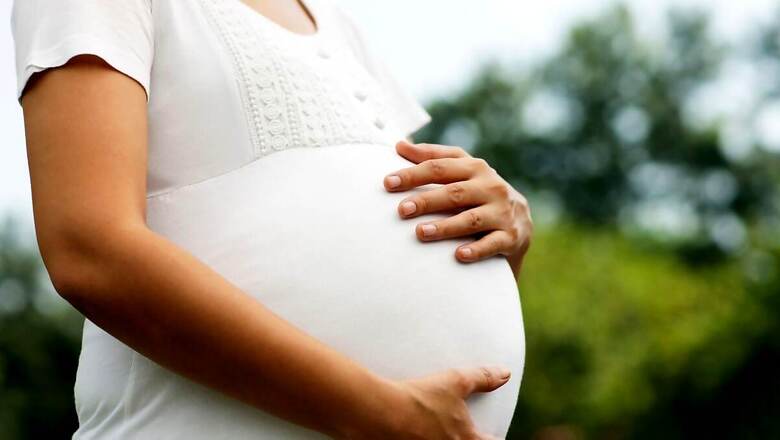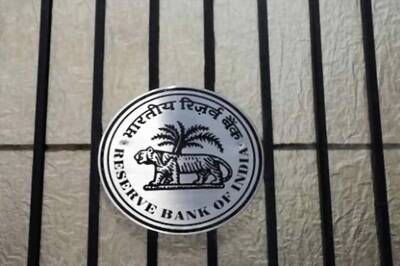
views
Pregnancy is one of life’s biggest miracles. To have a whole new life growing inside of oneself is indeed awe-inspiring. The nine months of pregnancy for a mother is described as a nine-month-long preparation for a lifetime of love. Pregnancy and motherhood is are symbols of sanctity, and happiness and considered as a socially sanctioned badge of honour for women. In a collectivistic society like ours that places heavy emphasis on family, motherhood becomes a woman’s ‘ultimate’ destination.
The uterus has long been regarded as a sacred space, owing to its immense power to create new life. However, we often fail to recognise it as a liminal space as well. The concept of liminality was developed by folklorist Arnold van Gennep and anthropologist Victor Turner. According to this theory, liminality refers to the transitory space that lies ‘in-between’ two phases. Just as summer vacations separate school years and friends, pregnancy as a liminal space separates ‘non-parent’ from ‘parent’. Additionally, it separates ‘non-birth’ from birth.
During this liminal window is when regional and/or local social structures, rituals and cultures shine through and make themselves most apparent. With the evolving and complex nature of our societies, the criteria for an ‘ideal’ and ‘socially desirable pregnancy’ tightens, leaving a very narrow bottleneck that a to-be mother must overcome. The social dynamics and interwoven threads of caste, class, religion, medicalisation of the pregnant body and body image standards intertwine to produce the experience of pregnancy.
What is considered ‘socially desirable’ is, at the end of the day, a widespread and widely accepted discourse that, over time, solidifies into a notion. These notions then dictate how we view pregnancy, which translates materially into our behaviours. One such notion-to-behaviour example is the still lingering presence of a son meta preference, which continues to pervade the overall mindset of people, despite the rapid progress in women’s welfare.
Son meta preference essentially refers to a higher number of people preferring sons over daughters than those who prefer daughters over sons. At its core, this can be traced to a patriarchal line of thought, which negatively impacts women, reducing them from being a mother to simply the carrier of a male heir for the family.
Indian society has always had strong patriarchal roots. Patriliny, which is the practice of passing down familial property to the male heirs of the family, is but an offshoot of patriarchal structures. While patriliny is dominant in India, especially in the north and central regions, it is also a function of region on a smaller scale. For instance, in Tribal communities such as the Khasis, there exists a matrilineal system instead, where there is a strong preference for daughters.
Academic disciplines are not completely exclusive of each other, which allows the application of psychology to the discussion on the liminality of pregnancy. One of the most basic concepts encountered by psychology students is the ABC model or the Tripartite Model of Attitude. This model systematically breaks down attitude into its three components—namely, the affective component, behavioural component, and cognitive component.
The affective component deals with how we feel about something. The behavioural component refers to how we express our feelings or thoughts about something through our behaviours. Lastly, the cognitive component involves how we think about something. Using this ABC model as a reference, we can identify patterns in how pregnancy and pregnant women are reduced to reproductive tools that perpetuate larger social narratives and notions.
For instance, when there is aversion towards a child simply because she is a girl, or elation at being “blessed with a boy child instead of a girl,” this would fall under the affective component. This might manifest behaviourally as neglect of the daughter (and the mother), or in extreme cases, as having multiple children. The latter often occurs when families desire at least one son if the firstborn is a daughter or aim to have a certain number of sons. When such feelings and behaviours accumulate, they produce an overall cognition of son superiority and daughter inferiority.
The burden of these attitudes is borne by the mothering body that is in the midst of the pregnant liminality. The women who are subject to these gender-biased cognitions are pushed into harmful behaviours such as repeated and/or closely spaced pregnancies, which ultimately takes a toll on the body. Such behaviours have been associated with a higher risk of anaemia and higher maternal mortality and morbidity.
The situation becomes increasingly grave when there is not just a first-born daughter, but successive female births in families that adhere to son-preferent attitudes. While no concrete evidence has been found, research based on suggestive evidence indicates higher mortality rates for women with first-born daughters compared to those with first-born sons. Speculated causes include heightened effects of postpartum anaemia, lower bone density, and labour complications.
When viewed through the lens of the life course paradigm, the timing of pregnancy-related behaviours plays a critical role in determining health outcomes for both the child and the mother. Since a woman’s reproductive window is limited, younger women with greater reproductive potential—who have many more reproductive years ahead—are more vulnerable to getting caught up in cycles of toxic fertility behaviours. The harmful effects of extreme fertility behaviours compound with each successive birth, affecting both the child and the mother.
In the case of children, the effects may include preterm birth, being small for gestational age, or low birth weight. When a male child suffers from any of these conditions, the blame is often placed on the mother for failing to take care of herself adequately to ‘provide’ a healthy male heir for the family. In many instances, this can lead to social pressure on the mother to conceive another healthy male child, trapping her in a vicious cycle of repeated and deteriorating fertility.
This pattern of successive births is common among women who lack access to education and healthcare services. However, this does not mean it is absent among educated women. While the use of ultrasound for sex-selective determination is illegal in India, it is important to recognise that those who are socio-economically affluent may still possess the social networks and financial resources to access these medical facilities through illicit means.
Patriarchy, as a deeply entrenched attitude and mindset, must be recognised as the root cause, rather than relying on superficial, surface-level systemic changes such as banning sex-selective practices, which are unlikely to alter the current state of affairs. Unless an attitudinal shift takes place, behavioural change will not persist.
An even more unfortunate dimension to this issue is that women themselves sometimes adopt an avoidant approach. They have been instilled with the fear that either they or their daughters will become victims of abuse and neglect, leading them to avoid having girl children. Even if the mothers do not personally subscribe to the son meta-preference narrative, taking an avoidant approach is often seen as easier than challenging established socio-cultural norms. Another reason women may avoid having daughters is the perception that it is ‘easier’ to raise sons. For instance, in the case of a sexual violation or assault, the family’s honour is seen as having been irreparably damaged, simply because the family’s honour is involuntarily borne by the girl.
A significant body of research has shown that new mothers often flee their homes with their female infants to protect them from female infanticide. While female infanticide may seem like a distant concept for those of us privileged enough to have not encountered it, it shockingly remains prevalent. The aftermath of pregnancy, combined with the hardships of being on the run with an infant, exacerbates the challenges, especially given the lack of resources and support.
This article would be incomplete without addressing the unrealistic beauty standards that distort the reality and struggles of pregnancy. It is well-known that women are often led to believe that their beauty is contingent upon conforming to society’s thin ideal. This pressure does not diminish during or after pregnancy. Pregnancy involves numerous physiological changes, with weight gain being one of the most noticeable. The “ideal pregnant body” is portrayed as slender with a “neat” baby bump, rather than acknowledging that weight gain can occur across various parts of the body.
We also need to reconsider how we express concern for expectant women. Although often well-intentioned, comments like “Oh, you’ve put on so much weight!” or “Make sure you lose this fat once the baby is born” can negatively impact a pregnant woman’s self-image. Such remarks can pressure women to conform to the idealised pregnant body stereotype, potentially leading them to harm their bodies instead of allowing themselves the necessary time to recover from the intense and rapid physiological changes of pregnancy.
The “bounce back” or “snapback” culture, which pressures women to return to their “pre-baby figure” immediately after childbirth, exacerbates existing body image issues. It is highly unrealistic for most women to achieve such a significant slim-down in a short timeframe, yet post-birth fat shaming can lead women to internalise these unattainable standards. This culture has given rise to commercial enterprises that exploit these pressures, reflected in the marketing of products such as waist trainers or oils and ointments that rid one of post-pregnancy stretch marks.
While female celebrities often manage to maintain their careers despite motherhood, it is crucial to recognise that their lifestyles differ significantly from those of the average woman. They typically have access to superior healthcare services and resources.
Pregnancy is a much-celebrated occasion, and rightly so. It represents a liminal space where the end of non-motherhood converges with the beginning of motherhood.
Ideally, all lives should be valued equally, but is this truly the case? Unfair differences in class, caste, religion, and, most importantly, mindsets regarding women and the gender of children are what widen the crevices of inequality in our society. Suffice it to conclude by saying that it is time to challenge and dismantle the stereotypes surrounding pregnancy, motherhood, weight gain, beauty, and the preference for sons if we are to genuinely evolve as a society that is not tied down by patriarchal constraints and myopic mindsets.
Yashee Jha, a multi-faceted student, is an avid commentator on various topical issues. Views expressed in the above piece are personal and solely that of the author. They do not necessarily reflect News18’s views.

















Comments
0 comment